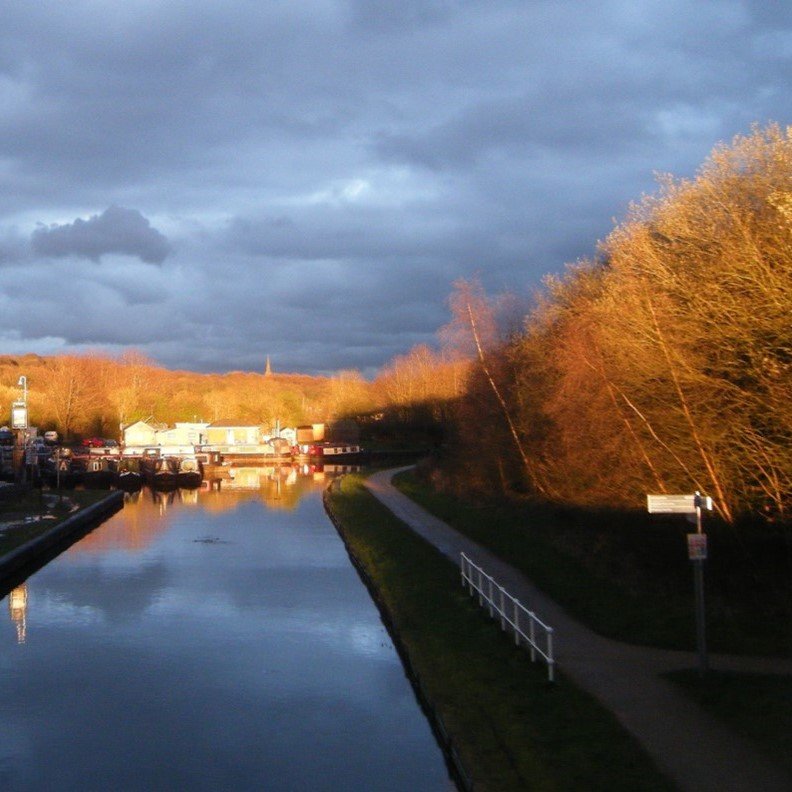The Music of Chat Moss
Chat Moss is a parcel of moss land located south of the stretch of the Bridgewater Canal between Worsley and Leigh. Apart from the beautiful sounds of nature on the mosses, it is famous for provoking and inspiring reactions from many who see it. This includes music.
What or where is Chat Moss? Chat Moss is an important peat bog located in Greater Manchester on the border of Salford, Wigan and Trafford. It is adjacent to the Bridgewater canal in part, and covers some 10.6 square miles (27.5 km2) in total. It is an important landscape with both national and international protection designations. It is a site of special scientific interest and part of a European Special Area of Conservation. Consequently, it hosts a wide variety of wildlife.

It dates from the last ice age, some 10,000 years ago. Although there has been land reclamation to allow it to be used for agriculture, the peat is as much as 30ft (9m) deep in parts. In 1958, special artefacts were found within the peat during the reclamation process including the head of a man known as ‘Worsley Man’, a Romano-British man dated approximately from 100 AD.
The name Chat Moss is thought to be named after St Chad the Bishop of the Mercians, a 7th century monk, but it could also be named after the Celtic for wooded area ‘Ced’. The land was wet and wooded and that is why over the centuries it formed into peat bog.

Daniel Defoe, the 18th century writer, journalist, and spy, referred to Chat Moss in 1754 in his diary:
“We pass’d the great bog or waste call’d Chatmos, the first of that kind that we see in England … The surface, at a distance, looks black and dirty, and is indeed frightful to think of, for it will bear neither horse or man, unless in an exceeding dry season, and then not so as to be passable, or that any one should travel over them … What nature meant by such a useless production, ’tis hard to imagine; but the land is entirely waste…”
However, dismal it may have looked, it proved to be an inspirational landscape in the 20th century for one local musician, Peter Maxwell Davies, who composed an orchestral tone poem entitled Chat Moss in 1993/4.
Salford born Davies (1934 – 2016), was born in Holly Street, Langworthy and grew up in Swinton on Wyville Drive. He was the son of Thomas Davies, a manufacturer of optical instruments, and his wife Hilda, an amateur painter. However, at a very early age he became interested in music after hearing the Gondoliers by Gilbert and Sullivan. He became a composer, eventually rising to be “Master of the Queens Music” and gained a knighthood.
Attending Leigh Grammar School, he entered a BBC radio competition aged 14 with a composition entitled Blue Ice. This proved to be a pivotal point in his career progression. He studied at Manchester University and the Royal College of Music in Manchester (Now the Royal Northern College of Music). Together with some important British composers, he created a new movement of contemporary music composers that became popular in the late 20th century known as New Music Manchester which included Harrison Birtwistle, Alexander Goehr, Elgar Howarth and John Ogdon as well as Davies.
A tone poem is a piece of orchestral music, usually in a single continuous movement, which illustrates or evokes the content of a poem, short story, novel, painting or landscape. Chat Moss evokes Davies’ emotions and memories of this special landscape that he must have passed daily throughout his school days, and for that reason it is special.
This short, richly textured, tone-poem was created to allow a school orchestra to perform at its best. Characteristically, Davies finds ways to engage and stretch young players while staying within the bounds of what is practical for them. This creative and vivid piece allows them to shine. Chat Moss also formed the basis for a much larger piece Davies’ Fifth Symphony.
Chat Moss was first performed on 16 March 1994 by the chamber orchestra of St Edward’s College, Liverpool.
Join the Bridgewater Canal Guided Tours to hear more about the 20th century music of the canal including Chat Moss.
Click below to listen to the BBC Philharmonic perform Chat Moss.
Alexandra Fairclough – Bridgewater Canal Tourist Guide
Tel 07956 226699
Alexatours@outlook.com







